Ant Control
in SE-Qld
Fast & Affordable Pest Control
Keeping 1000's of Queensland homes and businesses safe from pests for more than 30 years!
Ant Control in SE-Queensland

“Did you know that on average, an ant can carry between 10 and 50 times its own body weight, and run at approximately 300 metres an hour!!”
National Geographic states that ants are common insects, but they have some unique capabilities. More than 15,000 known ant species occur around the world. They are especially prevalent in tropical forests, where they may be up to half of all the insects living in some locations. There are approximately 1,400 species of Ants known in Australia. Ants are amazing creatures who are social insects that live in large colonies. In their natural environment, they play an important role as predators and scavengers, and assist in the recycling of nutrients in the soil.
However, in our world, Ants are often regarded as ‘nuisance’ pests in and around buildings. Small mounds resulting from their excavations may be considered unsightly along garden paths, on balconies and around skirting boards and architrave bases in your home. As well as general ‘nuisance’ aspects, ants may present a health risk. There have been instances where ants have mechanically carried, on their bodies, or in the digestive tract, disease organisms causing dysentery and small pox, as well as a variety of pathogenic bacteria, including salmonella.
According to a Brisbane Times Article (published 8 August 2015), QLD has been crowned the territory with the most native species of ants in the world. Even beating out areas such as South America, New Guinea & Central Africa, which would for certain be quite surprising to some! If you are experiencing an ant problem, contact Suburban, the experts in ant control in Brisbane and the SE-Qld area.
Here are the most common ant species we encounter in SE-Qld:
Black House Ant

These ants are shiny, black, and around 2mm-3mm long. Their larvae hatch out of an egg as a grub. After some time (can be up to six weeks), the larvae will pupate (usually become a cream or white colour) and looks like an adult. The adult emerges with it’s defined body sections – head, thorax and abdomen. Black ants are usually found in kitchens, garbage, and also dog faeces, scavenging. They are a ‘sweet feeder’ attracted to sweet food sources.
Coastal Brown Ant

These ants are yellow-brown to brown in colour, and are not overly large at 1.5mm to 2.5mm long, but they have very large heads. Larvae hatch from small eggs, then after several moults, the larvae pupates into three different castes:
- Workers (nest builders, supply the food to the colony, feed larvae and defend the nest/colony)
- Females are the largest in size and will lose their wings after mating. The females will become the Queen (to reproduce) and live for years
- Males are called drones and exist only to mate with the female ant
They nest in soil and will excavate along pathways, gardens and walls. They are attracted to foods including meats, fruit, sweet items and greasy food.
Other ant species which can be found in South-East Queensland include Bull Ants (Myrmecia) (red or black large ants with a powerful sting usually found outdoors in mounds), Carpenter Ants (Camponotus) (also known as Sugar Ants) and Funnel Ants (Aphaenogaster). See Funnel Ants page here.
Controlling Ants
Ants look much like termites, but there are some significant differences. Ants have a narrow “waist” between the abdomen and thorax, which termites do not. Ants also have large heads, elbowed antennae, and powerful mandibles (above the jaws).
Effective control of ants often relies on a knowledge of their nesting habits. At the broad level, a knowledge of the nesting habits and feeding habits can be most helpful. More specifically, where a given infestation is being treated, a thorough survey and inspection should be carried out. By following trails – particularly, where possible, those of workers loaded with food – the location of the nest, either approximately or precisely may be determined. Direct treatment of the nest/s, where possible, can provide the most effective, long term control. The use of chemical barriers that interfere between the nest/s and possible food sources add to effective control.
Ants continue to be one of the most problematic pests that we experience each year. Recent years has seen the introduction of many ant control products including gel baits, new and improved insecticides, as well as granular products which target specific species depending on their preferred meal source (sweet feeding, protein feeding or lipid feeding). It is an exciting time for not just pest managers but also as consumers knowing that we have the absolute best products available to us to ensure your needs are met and maintained when it comes to controlling these pesky insects.
If Ants are driving you crazy in your home, or you would like some friendly advice, give us a call we’re always happy to help! If you would like us to treat at your place for ants, you can book our Targeted Pest Solution (which treats one pest) online on a date and time that suits you via our live booking system by clicking the Book a time Now button. You can also upgrade to our most popular pest treatment package, our Comprehensive Pest Solution which treats cockroaches, ants, spiders and silverfish and includes a 12 month warranty on our treatments.
FREQUENTLY ASKED ANT CONTROL QUESTIONS
If you have any questions about ant control, we have provided answers to some frequently asked questions below:
Common ant species include black ants, sugar ants, coastal brown ants, and fire ants. Each species varies in behaviour, habitat, and the level of threat they pose.
Ants have a distinct waist, elbowed antennae, and are often seen in open areas. Termites have a thick waist, straight antennae, and live in hidden colonies. While ants forage for food, termites consume wood, causing structural damage.
Yes, reproductive ants (alates) have wings and fly during their mating season, usually after rain. Once they mate, they shed their wings and establish new colonies.
Ants enter homes in search of food, water, and shelter. Crumbs, spills, and unsealed food attract them. They may also seek shelter from extreme weather conditions.
Sugary foods, grease, and crumbs attract ants to kitchens. Certain species also look for water sources, so leaky taps and damp areas can increase infestations.
Common signs include ant trails, nests in soil or walls, discarded wings, and groups of ants near food sources. If you notice persistent ants, professional treatment may be needed.
Most ants are harmless, but some, like fire ants, can deliver painful stings. Some species, such as carpenter ants, can cause structural damage by burrowing into wood.
Certain ants, like carpenter ants, can damage wood by burrowing into it. While they don’t eat wood like termites, their tunnels can weaken structures over time.
Keep food sealed, clean up crumbs, remove standing water, and seal entry points. Regular pest control treatments help keep ants under control.
If DIY methods fail or the infestation is widespread, professional pest control is recommended. Our technicians can identify the species and apply targeted treatments for effective results.
TARGETED PEST SOLUTION - ANTS
Have a pest infestation? Let us sort it out for you
$220
Why not upgrade to our Comprehensive Pest
Solution (treats Cockroaches, Ants,
Spiders & Silverfish) for a total of $330 (for a standard-size home)?
No waiting around, lock in a time today with our live booking system.
Targeted Pest Solution - Ants
Our Targeted Pest Solution treats one pest such as Ants for $220 (for a standard-size property). You can upgrade to our Comprehensive Pest Solution (total cost $330 for a standard-size home) which will treat Cockroaches, Ants, Spiders and Silverfish. Would you like to upgrade?
Fast response to enquiries in under 4 business hours.
Guarantee: if pests return within the service period, so do we!
100% certified pest management practitioners.
HACCP (FOOD SAFETY) certified
ISO9001 certified

Suburban Pest - Your Best Choice For Pest Control
Trustindex verifies that the original source of the review is Google. From the girls in the office to Simon our Pestie...absolutely brilliant. Thanks guys you rock!Posted onTrustindex verifies that the original source of the review is Google. Efficient, on time and great work done.Posted onTrustindex verifies that the original source of the review is Google. Jonah was very friendly, polite and knowledgeable and diligently applied the treatment to the entire property with immediate results. It's the second time I have appealed to Suburban Pest Management for pest control and I will definitely call them again next year. It's a pleasure to work with this company and the staff they select!Posted onTrustindex verifies that the original source of the review is Google. Ethan only took 20 min and made it easy to understand.Posted onTrustindex verifies that the original source of the review is Google. From the first phone call to the final home visit, working with SPM was a seamless experience. Quinn was highly professional, clearly explaining every step of the process from start to finish. The service was outstanding, and the results exceeded our expectations. We will definitely use SPM again and wholeheartedly recommend them to our family and friends.Posted onTrustindex verifies that the original source of the review is Google. What a professional service and Jonah was a pleasure to deal with.. He’s knowledgeable was so helpful and great.. Would highly recommend this service to family and friendsPosted onTrustindex verifies that the original source of the review is Google. This is the second time I have used Suburban Pest Management and I’m very satisfied with their service. I learn something each time about what my options are to keep pests under control or away from my property in the first place! Jonah was attentive to our issues and resolved these quickly. Thanks!Posted onTrustindex verifies that the original source of the review is Google. Jonah’s was really great. Knows is stuff and very thoroughPosted onTrustindex verifies that the original source of the review is Google. Thank you to Suburban Pest Management. Each person we've spoken to from the office and each person we've had attend our properties have been beyond informative and very kind.Posted onTrustindex verifies that the original source of the review is Google. Great service and experience will definitely be using again. Seen results almost immediately. Thank you again
Get a fast & free quote.
Fill out the form and we will get back to you with the quote that has the best price-to-quality ratio you can find on the market.
“The job was done in no time at a fraction of the price we expected.”
Stan Ley
“Punctual, friendly and a thorough service as always!”
Nicole Vanderzalm
“Very friendly staff and great service always.”
Peter Jonsson
